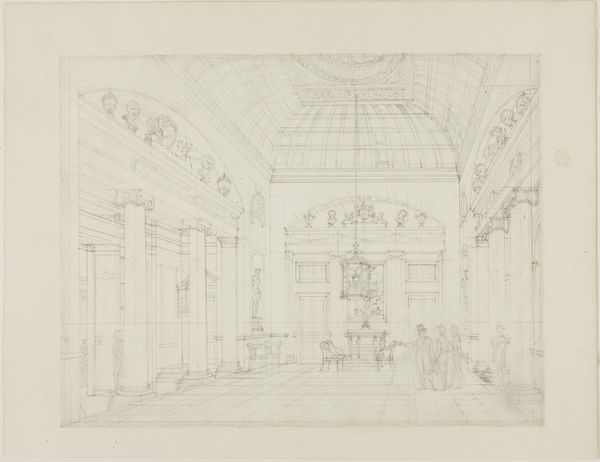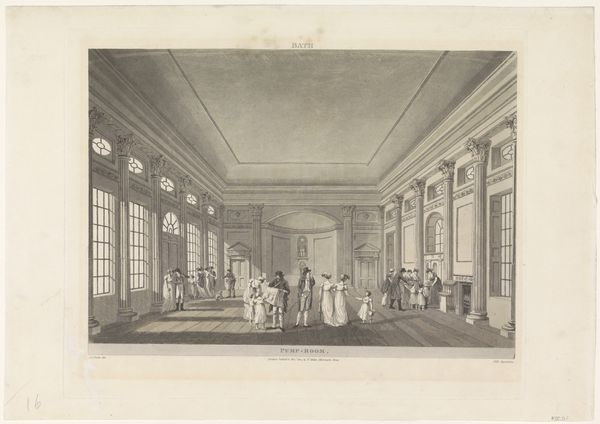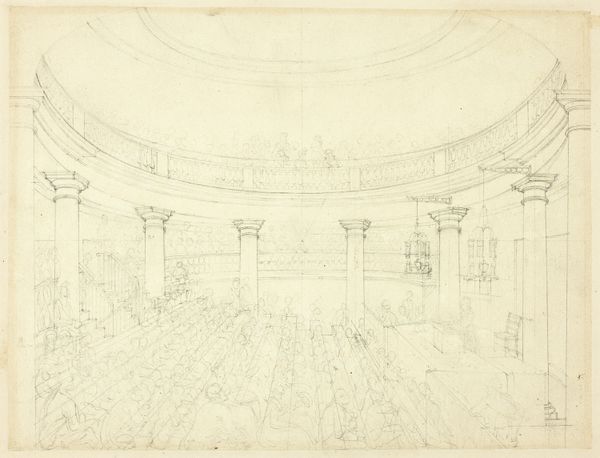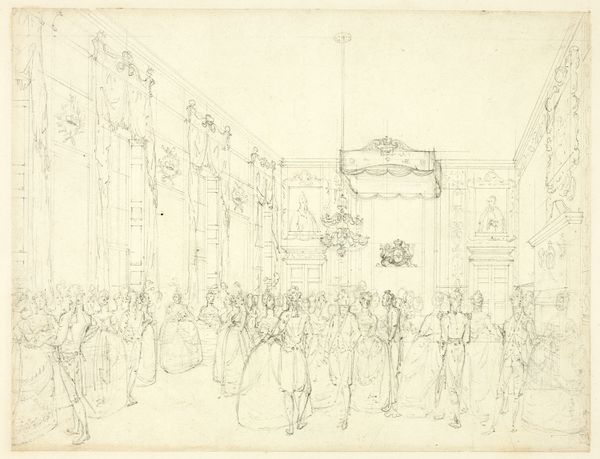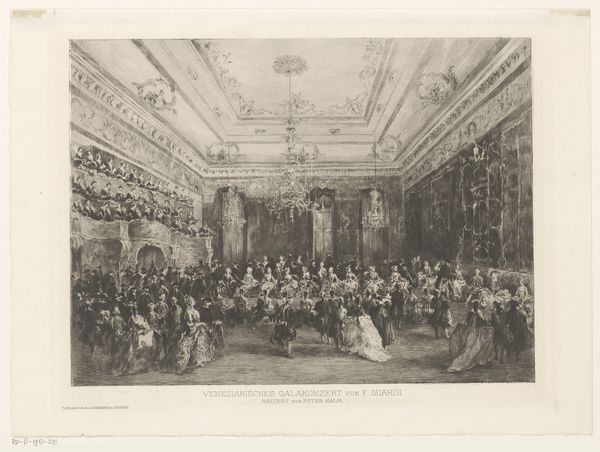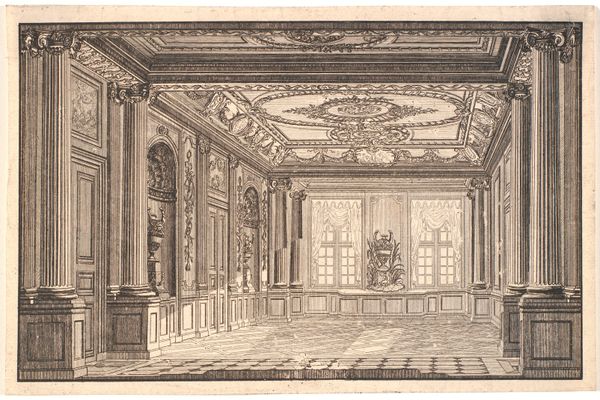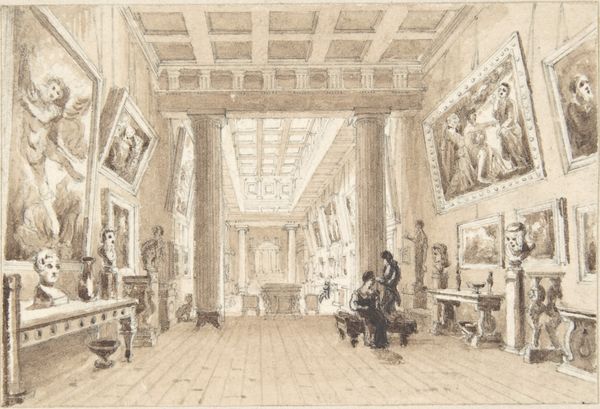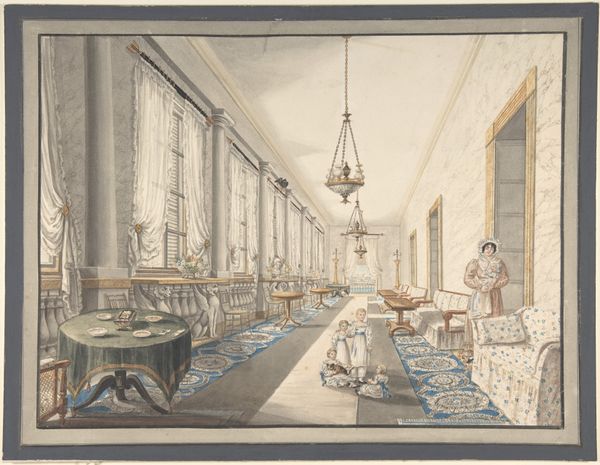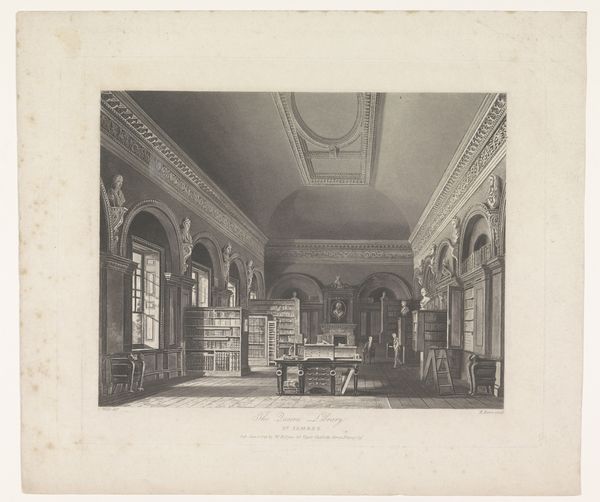
drawing, print, pencil, architecture
#
drawing
# print
#
pencil
#
architecture drawing
#
architecture
Dimensions: sheet: 10 11/16 x 14 15/16 in. (27.2 x 38 cm)
Copyright: Public Domain
Curator: This meticulous drawing offers a glimpse into Victorian interior design. The work, entitled "Design for a Sitting Room," comes to us from Charles Hindley and Sons, and the Met places its creation sometime between 1841 and 1884. The medium here combines pencil, print, and drawing to showcase intricate detail. Editor: It feels very…aspirational. Almost austere, even though it's dripping with ornamentation. There's an order, a precision, that’s almost unsettling. All those symmetrical objects displayed. Were people really living in spaces like this? Curator: In some wealthy circles, certainly. Think about the period—the burgeoning middle class, industrialization transforming society. An interior like this declared stability, refinement, access to wealth and culture through controlled environments like this space. Editor: But who did it exclude? The excessive display is impossible to ignore. Were these rooms sites of actual gathering or mere symbolic fortresses against the outside world and what might come with it? All the dark realities of industrial expansion for the benefit of just a few. Curator: An excellent point. We have to consider these interiors within the context of the wider inequalities of Victorian society. Displaying all the most opulent, expensive objects… These interiors also functioned as statements, reinforcing established power structures by presenting particular narratives. The rigid formality may not reflect authentic experience so much as imposed ideals. Editor: Exactly! It feels staged and almost propagandistic—like a controlled representation. Looking at this image of this "sitting room", I find myself thinking less about sitting, and more about the unspoken power dynamics built into every line, the quiet declaration of a very particular type of citizen, and at what price they attained their success and style. Curator: You’ve definitely helped me see it in a new light, too. Beyond just the aesthetics and the furniture, there's a whole socio-political narrative encoded in the walls and the arrangement of every chair. Thank you. Editor: Likewise! Considering how we actively interrogate these historical images—that’s really the core mission. The drawing shows how to create social, cultural, and gendered meaning using domestic space, an act which has powerful echoes today.
Comments
No comments
Be the first to comment and join the conversation on the ultimate creative platform.
